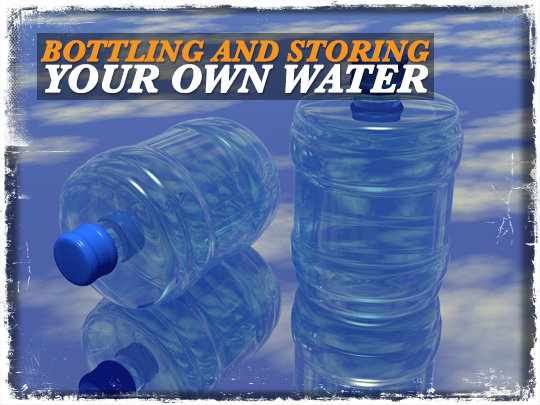
According to the CDC any water that is not commercially bottled should be discarded after six months (CDC, 2014).
“Commercially Bottled Water”, according to the FDA, “is considered to have an indefinite safety shelf life if it is produced in accordance with CGMP and quality standard regulations and is stored in an unopened, properly sealed container”.
(http://www.fda.gov/Drugs/DevelopmentApprovalProcess/Manufacturing/ucm169105.htm)
The FDA does not require an expiration date for bottled water. However, long-term storage of bottled water may result in aesthetic defects, such as off-odor and taste. Bottlers may voluntarily put expiration dates on their labels, and most do place an expiration date on the containers (FDA, 2014).
Obviously, commercially bottled water, if you believe in the process, makes the most sense when it comes to long-term storage of water. The problem is that bottled water is expensive in comparison to what you pay for tap water, and while the water itself may have an indefinite shelf life the packaging material may not. Most material used for bottled water packaging, as stated in a previous article is flimsy and will not hold up well under normal handling/movement in a backpack or vehicle.
Many of you probably realize that some, if not many of the manufactures that bottle water bottle using tap water. Exotic filtering and purification methods are not typically used. There are certain regulations that specifically address those that bottle so-called spring water and mineral water.
What sets commercially bottled water apart from the water you could bottle at home is the process by which the bottles are filled. You would have to take certain things at face value and make some assumptions, but for the most part the process adheres to strict sanitary standards.
You can store your own water if you use the proper containers and follow proper sanitation methods. What is the shelf life of water you store yourself? In theory indefinitely, but this assumes you do not contaminate the water at some point or it is not contaminated before you fill up a container with it.
Six months is a good guideline, but this can be costly if you have to empty hundreds of gallons of water every six months to refill with fresh.
You can however, incorporate the stored water into daily use before it expires, or when you think it has expired, and then refill so you always have fresh water on hand. Use the water for crop irrigation, or use to flush toilets to help offset the cost of refilling the containers.
- Only use food grade plastic containers for water storage, Typically water barrels are blue to signify water
- Wash the inside of the container with warm soapy water and then rinse well before using for the first time or after emptying and before refilling again
- Add one teaspoon of bleach to a quart of water. Use unscented common household bleach that contains sodium hypochlorite at between 5.25 and 6 percent active, add the solution to the water container after washing and drying and swish around ensuring the solution touches all of the surface inside the container, wait at least 30 seconds then empty, you can let air dry or rinse with clean water
- Only fill water containers with hoses rated for potable water, typically the hoses are white or occasionally blue/grey, keep in mind the larger water storage containers may have to be filled in place with a hose connected to a faucet inside the home because of the weight, so be prepared for this
It is not recommended that you use containers that had contained fruit juices or milk, the plastic used for these beverages is not designed for long-term storage
If you followed the correct procedures when filling food grade water containers, then again, in theory, the water would be safe to drink for an indefinite period. To be safe once you have tapped into a particular container for water however, assume the water’s shelf life has expired. In other words do not use your emergency water source until there is an emergency, or you plan to incorporate the water into daily use and then refill the container. Draw from one container at a time until empty, and then follow the stated sanitation procedures for refilling.
Too much can go wrong if you start using the water and then refilling on top of the water that is already in the container. Once opened, you should use the entire container and then follow the procedures for cleaning the container and refilling the container.
If you have to draw from a large container, for example, using a siphon (that may have been contaminated), or you use a water hose to fill the larger water storage tanks that is not designed for potable water – then you stand the risk of contaminating the water.
If unsure of the water quality filter and then purify using bleach or by boiling. Do not drink or use for other purposes, any water that has been contaminated by any chemicals or toxins. Filtering and purifying using bleach or by boiling will not remove the chemicals/toxins.
CDC. (2014, December). Retrieved 2015, from http://www.cdc.gov/healthywater/emergency/safe_water/personal.html
FDA. (2014, October). Retrieved 2015, from http://www.fda.gov/Food/FoodborneIllnessContaminants/BuyStoreServeSafeFood/ucm077079.htm